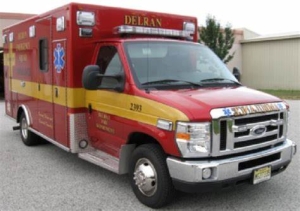Thoroughbred Racing Fan Association, Inc.

Thoroughbred Racing Fan Association, Inc.


RACETRACKS CAN LEARN FROM THE HAMLIN INCIDENT
2/19/2023
As they turn for home at any racetrack in the country the unthinkable could happen. A horse in the field goes down catapulting its jockey to the ground with jockeys and horses traveling 40 miles per hour instantaneously try to avoid the pending catastrophe. The crowd shrieks and tries to look away knowing what might be happening. As the field exits the disaster zone a lone jockey lies motionless on the cold dirt track. Racing personnel rush to the scene. The stands emote a winter still. This scenario happens too often at one of the 80+ Thoroughbred racetracks across the country. According to Terry Meyocks, Jockey Guild President and CEO, on the average 2 jockeys a year die as a result of these accidents and more are paralyzed. Some argue that racing accidents are part of the sport. Maybe so, but how tracks respond to these accidents are controllable by the policies, practices and staff tracks have to respond to these horrific situations. Meyocks in BlloodHorse, “What’s Going On Here”, believes that 90% of tracks need to improve their safety and have better on site care for injured riders. According the piece’s writer, Frank Angst, the injury of Buffalo Bills player, Damar Hamlin, during a playoff game demonstrates how the appropriate response to an athletes injury can save lives and reduce chances for serious injuries. Meyocks sees Hamlin’s experience as a “wake-up call” to racing. Currently, racing’s main focus on this safety process comes through the NTRA’s Safety and Integrity Alliance’s accreditation program. This NTRA transferred the program to HISA and if HISA survives the brutal litigation, it will be reactivated. According to the NTRA website based on June 2022 data only 22 tracks in the county have successfully passed the accreditation process. Although an accurate number of the tracks operating now is unavailable, this reflects about 25% of all tracks. HISA has accepted this base number and hopes to transition more tracks into full accreditation over the next few years. Given that as many as 75% of racetracks do meet the NTRA/HISA safety standards, safety measures at those tracks remains a question. For example, the NTRA/HISA standards for ambulance use, coordination with Level I Trauma Centers and standards for starting gates and personnel operating them do not apply to them. This is not to suggest that non-accredited tracks do nothing. What is implied is that a local decision for safety is not monitored by an objective, outside group. Especially, in light of the Hamlin incident jockeys who ride at these tracks have no guarantee for their safety and health care if an incident occurs. Some of the tracks that are not accredited host graded stakes races which attract horses and jockeys from across the county. According to NTRA Safety and Integrity Alliance website neither Oaklawn Park which hosts the $1.25 million Arkansas Derby or Charlestown Racetrack which host the $1 million Charles Town Classic are accredited. As fans we assume that both these tracks have internal safety protocols to protect jockeys. But we do not know for sure. Any healthcare professional in the county knows that every hospital in the United States must be accredited by the Joint Commission. Through their strenuous reviews patients can be assured that the hospital to which they are being admitted provides the highest quality of care. The Joint Commission standards and survey process is so respected that it receives “deemed” status by the federal government which allows reimbursement from insurance companies for care provided in including Medicare and Medicaid. NTRA, according to their past CEO, Alex Waldrop, modeled the Safety and Integrity Alliance after the Joint Commission. The problem for NTRA was that the Alliance process lacked enforcement teeth. It made their process voluntary. Looking at the crowd size at the Arkansas Derby, fans do not appear to hold track accreditation at a high standard. Likely, few fans even know about track accreditation and whether the track they are attending or wagering on is accredited. To most it is about fun at the track or collecting on a wager. Should that be all for fans? Revisiting the adage might make us think differently ---“If you are not part of the solution then you are part of the problem.” Although HISA came about to implement anti-doping protocol and practices, it plays an enormous role in improving safety for jockeys. The advantage HISA has over NTRA track accreditation program is it can strive for full compliance and not just voluntary acquiescence. Under its powers for “covered tracks” HISA can require all tracks to meet minimum safety standards and like the Joint Commission over time the bar for the standards can be gradually raised improving the safety of the sport we love. Imagine when a jockey signs on to ride a horse in a stakes race at an accredited track he can be sure that if she is injured in the ride the track has in place sophisticated protocols for care and treatment. Through the HISA accreditation process fans can be sure that our favorite jockeys will receive the highest quality of care in the event of an accident. For that we should be grateful. Yet we can not be idle passengers in this process; we must help drive it. Pending the adjudication of HISA we might want to bet only on races at accredited tracks, unless we are sure they have safety protocols in place. Not doing it reinforces the behavior of tracks that seem not to care about accreditation and the safety of our human athletes.